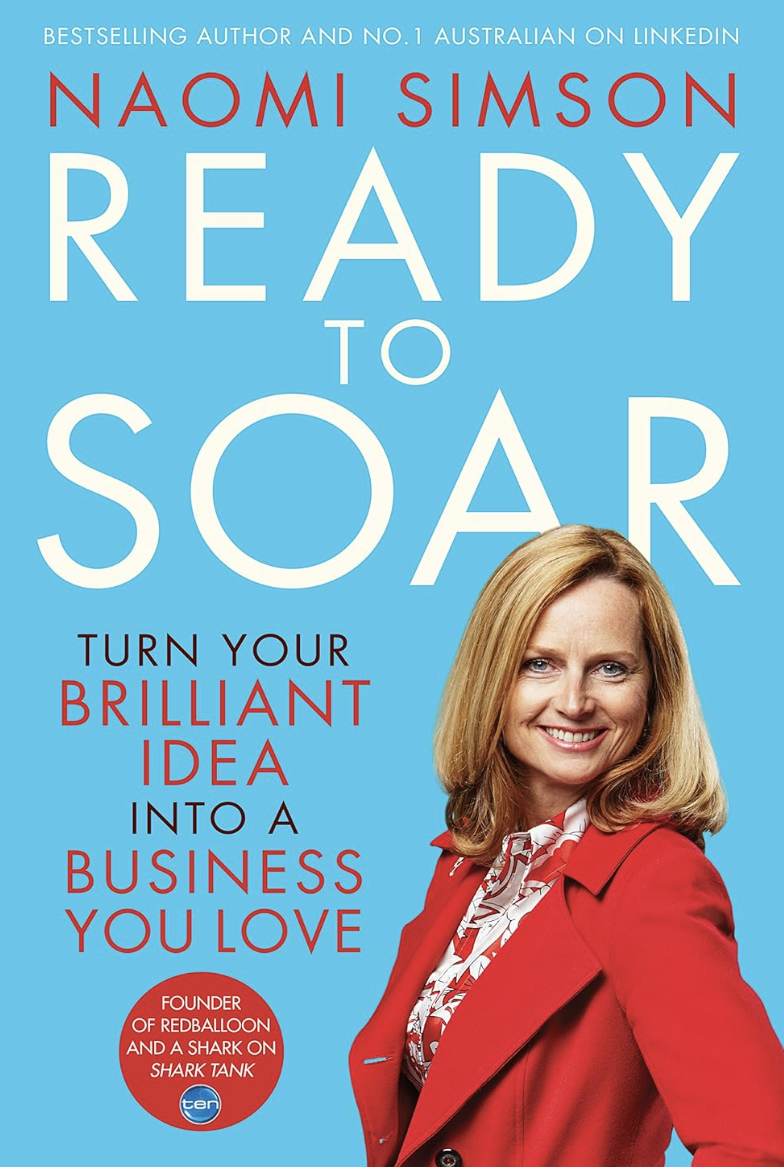From Dream to Daring
It’s a feeling that every single entrepreneur knows intimately. It might arrive in a flash in the middle of the night, or it might be a slow burn, a quiet dissatisfaction with the way things are that grows into a quiet conviction: "I could do this better."
It’s the idea. The spark. That thrilling, terrifying, all-consuming concept that plants itself in your mind and refuses to let go.
This is the beautiful, magical beginning of every single business journey. But it is also the place where the vast majority of dreams go to die. An idea, no matter how brilliant, is a fragile thing. It is just a thought. And the chasm between a brilliant thought and a thriving, real-world business can seem impossibly wide.
How do you cross that chasm? How do you take that spark and nurture it into a roaring fire? In short, how do you turn a business idea into reality?
After more than forty years in business, from starting RedBalloon in my living room to investing in dozens of hopeful founders on Shark Tank Australia, I have seen this process unfold time and time again. I’ve seen what works, what doesn't, and where the most predictable and painful traps lie.
The journey from idea to reality is not a single, heroic leap across the canyon. It is the process of patiently and strategically building a bridge, one solid plank at a time. This is that blueprint. This is my definitive, no-nonsense guide to building that bridge and walking confidently across it.
The Spark - Interrogating Your Idea Before You Invest a Cent
Before you quit your job, before you register a business name, before you spend a single dollar on a website, you must put your idea through a rigorous interrogation. You must be your own toughest critic. The goal here is to separate a "good idea" from a genuine business opportunity. They are not the same thing.
1. Go Deeper Than the "What" - Find Your "Why"
Your idea is the "what" you will do. But the most important question is "why?" A business built solely on a clever "what" is a business with no soul, and no staying power. A business built on a deep, unwavering "why" is a business with an unbreakable core.
- Why this idea? What is the problem you are obsessed with solving? What is the change you want to see in the world?
- Why you? What is your unique connection to this problem? What personal experience or passion gives you the right to win?
When I started RedBalloon, the "what" was an online gift retailer. But the "why" was so much more powerful: to change the way Australians give gifts, shifting our culture from accumulating That purpose was my fuel through the countless terrifying moments of the early days. A powerful "why" is the foundation of resilience, which is the single most essential ingredient for any founder.

2. Fall in Love with the Problem, Not Your Solution
This is the single biggest mindset shift you must make. Too many founders fall in love with their "brilliant" solution. They become rigid, defensive, and unwilling to change it.
A great entrepreneur is not in love with their solution. They are obsessively, passionately in love with their customer's problem. When you are in love with the problem, you become endlessly curious. You are open to feedback. You are willing to adapt and pivot your solution until it is the perfect answer to their pain. Your first idea is almost never your best one. It is simply your first guess.
The Litmus Test - How to Validate Your Idea in the Real World

This is the most critical, most unglamorous, and most frequently skipped stage of the entire journey. It is where you move from the dangerous world of your own assumptions ("I'm sure people will love this!") to the powerful world of cold, hard evidence.
An idea has zero commercial value until you can prove that a stranger is willing to part with their hard-earned money for it. This is the essence of validation. Your job is to gather this proof as quickly and as cheaply as possible.
1. Get Out of the Building (And Talk to Humans)
Your friends and family are not your customers. They love you, and they will lie to you to protect your feelings. You must talk to real, potential customers—at least 20 to 30 of them. But here’s the key: do not pitch them your idea.
Your goal is not to sell; it is to learn. Be an anthropologist. Ask open-ended questions about their life and the problem you believe you can solve.
- "Tell me about the last time you tried to find a unique gift for someone..."
- "What was the most frustrating part of that process?"
- "What solutions have you tried in the past? What did you like or dislike about them?"
Listen for their pain points, the language they use, and the "workarounds" they've already created. This is pure gold.
2. The "Smoke Test" - The Ultimate Validation Tool
This is my favourite, powerful technique for getting real evidence without building a full product.
- Create a simple, one-page website or landing page that describes your product or service as if it already exists. Use compelling images and clear copy that focuses on the benefits.
- Include a prominent button that says "Buy Now" or "Pre-Order Today."
- When a user clicks that button, a message appears: "We're launching soon! Due to huge demand, we're taking expressions of interest. Leave your email to be first in line and receive a 20% launch discount."
- Drive a small, targeted amount of traffic to this page using a modest ad spend ($100 is plenty to start).
The percentage of people who click that "Buy Now" button and leave their email is your conversion rate. It is a direct, quantifiable measure of genuine purchase intent. It is not an opinion; it is a data point. This is the kind of evidence that proves you have a business, not just a hobby.
The Blueprint - Charting Your Course with a Lean Plan

Once you have evidence that people actually want what you're selling, it's time to create a plan. Forget the old-fashioned, 100-page business plan that you write once and then shove in a drawer. You need a lean, agile, one-page blueprint that gives you clarity and direction.
Your blueprint is a living document. It should answer these fundamental questions:
- The Problem: What specific, painful problem are you solving? (Validated in Part 2).
- Your Solution: How does your product or service solve this problem in a unique and compelling way?
- Your Customer: Who, specifically, are you serving? Create a detailed profile. Go beyond demographics. What are their values, their fears, their media habits?
- Your Differentiator (The "Secret Sauce"): Why will customers choose you over all the alternatives, including doing nothing? Is it your brand story, your customer service, your technology, your price?
- Your Channels: How will you reach your customers? (Your validation experiments should give you early clues here).
- Your Revenue Model: How, exactly, will you make money?
- The Numbers: You must know your numbers. What are your estimated startup costs? How have you priced your product? And what is your break-even point—the number of sales you need to make each month to cover your costs? This last number is your first and most critical target.
The Engine Room - Building Your MVP and Fuelling the Journey
Now, and only now, are you ready to start building.
1. Build a Minimum Viable Product (MVP), Not a Masterpiece
The biggest trap for passionate founders is the perfectionist trap. They spend months, or even years, trying to build the "perfect" product with every possible feature before they launch. This is a fatal mistake.
You need to build an MVP. The MVP is the simplest, most stripped-back version of your product that solves the single, core problem for your customer.
- For RedBalloon, our MVP was a very basic website with just 16 experiences. It wasn't beautiful. It was clunky. But it worked. It allowed us to launch, to get real paying customers, and to learn from their behaviour what was truly important.
Your goal at this stage is not perfection; it is learning. Ship it, get feedback, iterate, and improve.
2. Fuelling the Journey (The Money Question)
How do you pay for this? The default answer in today's culture is to raise capital. I want to challenge that.
The best way to fund your business is bootstrapping. Fund it from your own savings and, more importantly, from your first sales. This is how I built RedBalloon. It is the hardest path, but it forces discipline, creativity, and a relentless focus on your customer. It allows you to retain 100% control of your destiny.
If you must seek external funding, do it after you have traction. The more you can prove with your own resources, the better the terms you will get, and the less of your precious company you will have to give away.
The First Mile - Obsessing Over Your First Ten Customers
You have a validated idea, a lean plan, and an MVP. You have launched. The journey from zero to one has begun. Now, what is your single most important job?
It is not to market to the masses. It is to find, win, and utterly delight your first ten paying customers who are not your friends or family.
- Find them by hand. Go to the communities where they are. Do things that don't scale.
- Over-deliver on value. Give them an unforgettable experience. Write them a handwritten thank-you note. Call them personally to ask for their feedback.
- Listen with profound curiosity. These first ten customers are your most valuable research and development team. They will tell you everything that is wrong with your product and everything they love about it.
- Turn them into evangelists. A delighted early customer is more powerful than any marketing campaign. They will become the seed of your future growth, the first ripple in the pond.
Whether you are selling the thrill of a V8 Driving Experience, the romance of a winery tour with lunch, or the serene wonder of a whale watching cruise, understanding and delighting these first customers is the key that unlocks everything else.

You Are Ready to Soar
The journey of turning an idea into reality can feel overwhelming. It can feel like you are standing at the bottom of an impossibly high mountain. But you do not climb a mountain in a single leap. You climb it one step at a time.
This guide is that series of steps. Start with your Why. Validate the problem. Create your Blueprint. Build your MVP. And Obsess over your first customers.
I have walked this path, and I have coached countless others as they have taken their first courageous steps. I have seen the fear, the doubt, and the struggle. But I have also seen the incredible joy, the profound sense of accomplishment, and the amazing impact that comes from bringing a great idea to life.
I have poured every lesson I have learned on this journey—the wins, the failures, the frameworks, and the practical checklists—into my book, Ready to Soar. The blog post you have just read is the roadmap. The book is the detailed, turn-by-turn GPS, the complete operating manual for this incredible adventure. If you are serious about this journey, it is my gift to you.
The world does not need more ideas sitting in notebooks. It needs more brave, passionate people with the courage to act on them.
You have the idea. You now have the map. The only question left is: are you ready to take the first step?
What is the idea you are ready to bring to life, and what is the one step you will take this week to move it from a dream to a reality?







